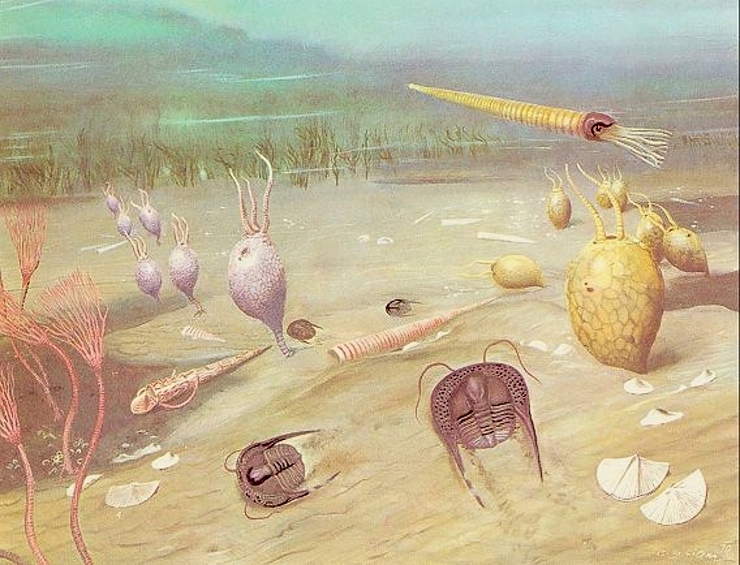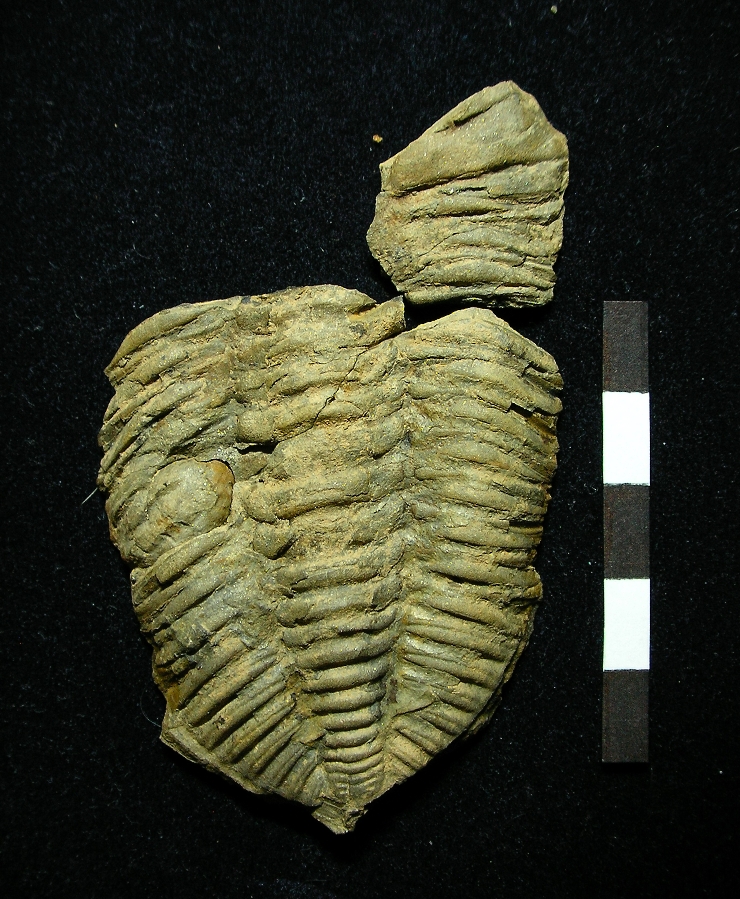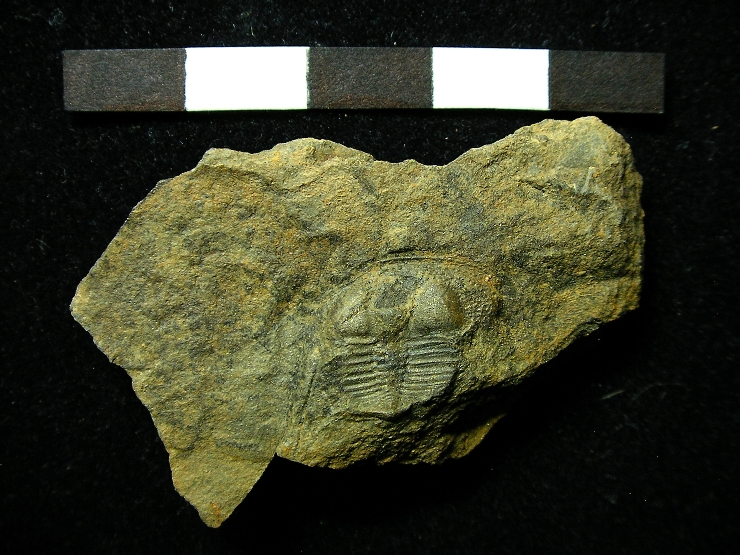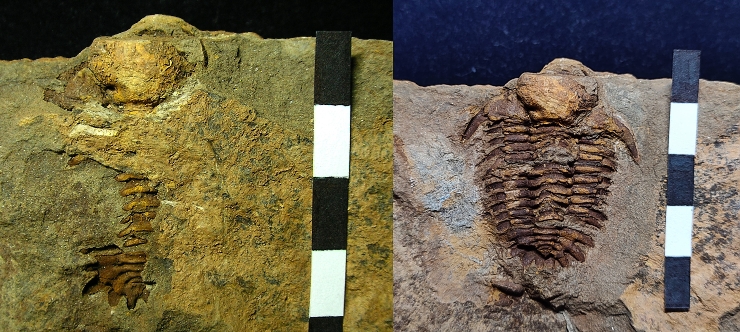Pěkné  Marrolithus ornatus je prozatím jeden z mých nesplněný snů. Dalmanitina se už zadařil, mám jednu hodně vydařenou hlavu.
Marrolithus ornatus je prozatím jeden z mých nesplněný snů. Dalmanitina se už zadařil, mám jednu hodně vydařenou hlavu.
The Prehistoric World, Volume Two - Ordovik
Categories: Finds and rescue research in the Czech Republic

In the last episode, we introduced our oldest Cambrian fossils, today we're going to introduceand some of the known sites where it can be found.
The Ordovician is the second era of the older protohistoric period, 485 to 443 million years ago. This period is considered one of the coldest in Earth's history. The cold climate culminated in its younger stage, when massive continental glaciation is documented in places reaching up to 30° south latitude. At the glaciated South Pole lay the area of present-day Sahara and South America, while the Bohemian Massif lay in the colder belt of the Southern Hemisphere.
There is no evidence of animal settlement on land yet, but the first terrestrial plants, similar to modern mosses, appear at the end of the Ordovician. Trilobites reach the peak of their development, growing up to several tens of centimetres in length, as exemplified by the North American Isotelus rex, the largest specimen found here measuring 72 centimetres. The bryozoans, ramenopods and applefish (echinoderms) are becoming an important group, forming the main component of the animal benthos.
The end of the Ordovician period is marked by the extinction of up to 85% of the animal species of the time. Its causes are not fully known. They are generally considered to be a decline in the oxygen content of the oceans and an increase in heavy metals in the water, either due to glaciation or increased volcanic activity. A gamma-ray burst that disrupted the Earth's ozone layer, exposing organisms to high levels of UV radiation, may also have been an unproven cause. This extinction took place at the turn of the Ordovician and Silurian periods, between 450 and 440 million years ago, and is one of the first of the so-called Big Five mass extinctions.
Locations
This period is probably not as collectible as the previous Cambrian. The fauna tends to be fragmentary and not always well preserved. Sediments of the Ordovician are found mainly in the Barrandien area, in the narrow area of the so-called Prague Basin, between Prague and Stary Plzenec. It is a sequence of blackish grey shales, with quartzites, sandstones, crumbles and dusty shales, with a total thickness of 2-3 km.
Prague Letná, location in the middle of Prague, below the Hanavský pavilion. On the slope between the Vltava River and Letenské sady, grey-black clayey shales and plate-like crumbly clasts are exposed. Parts of the shells of Deanaspis goldfussi and Dalmanitina socialis are abundant here. Attention, this site is currently a natural monument "Letenský profil", so the search is limited to surface collection only.
Děd u Berouna, the site is located on the top of a ridge, halfway between the village of Zahořany and the lookout tower on the top of Děd, near the crossroads by the green hiking trail. There are several long pits with poorly cleavable pink to yellow quartzites, which contain exclusively fragments of the trilobite Dalmanitina socialis. Whole fossils are rare here, and there is a lot of hammering on the quartzite.
In a notch inthe green hiking trail and adjacent acacia woodland, the dusty parts of the echinoderm Dendrocystites barrandei and a number of brachiopods or cephalopods can easily be found in the debris of the Letna Formation.
 Echinoderm Dendrocystites barrandei, Zahořany
Echinoderm Dendrocystites barrandei, Zahořany
ThePočapel profile, a rich locality of the Zahořany Formation of the Upper Ordovician, with an age of about 460 million years. In the highest part of the slope, directly above the road leading from Trubín to Počapel, there are several collecting pits with dusty rocks containing very abundant fauna. Most often you will find parts, but also whole shells of the trilobite Marrolithus ornatus or Dalmanitina proaeva, the echinoderm Aristocystites bohemicus and various species of bivalves and conularians. The site is currently overgrown with infestations, and the only access to it is from the top across the field.
Trilobite Actinopeltis Carolialexandri, Počapelský profile

Echinoderm Aristocystites Bohemicus, Počapel profile

Trilobite Dalmanitina Proaeva, Počapel profile

Pygidium, genus Dalmanitina, Pochapel profile

Trilobite Marrolithus Ornatus, Počapel profile

World map in Ordovician, location of Bohemia in red
The article is included in categories:
Post
To můj také  zatím mám jen tohohle "mrzáka" a spoustu jeho náhradních dílů. Celý jenom tenhle.
zatím mám jen tohohle "mrzáka" a spoustu jeho náhradních dílů. Celý jenom tenhle.
Moc pěkné, díky za další díl.
Paráda!  👍 Zrovna jsem dočetl skvělou knihu Ztracená moře uprostřed Evropy, tak mám cukání vyrazit do černý rokle na devon.
👍 Zrovna jsem dočetl skvělou knihu Ztracená moře uprostřed Evropy, tak mám cukání vyrazit do černý rokle na devon. 
Jinak ten Marrolithus je parádní! S Deanaspisem a Selenopeltisem to jsou největší ordovický fešáci! 













